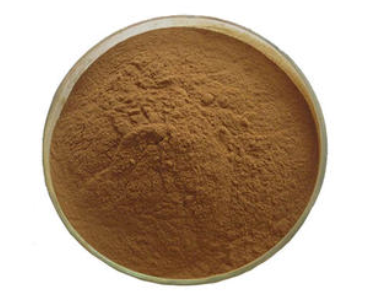What is tannic acid?
Tannic acid (单宁酸)has an antioxidant effect, is a natural preservative, can effectively avoid red wine is oxidized and acid, so that long-term storage of red wine can be maintained in the best condition. Recent studies have found that tannins are more effective in the prevention and treatment of cardiovascular disease. Cardiovascular disease is still the number one threat to human health, so it is a good way for middle-aged and elderly people to adhere to drinking the right amount of wine every day for self-care. In addition, many young people nowadays are under pressure at work and mentally stressed, and many of them are in a sub-healthy state. Therefore, it is best for young people to also get into the habit of drinking red wine, which can calm their nerves and relieve stress.
What is tannic acid?
Tannic acid, also known as tannin and ellagic acid, is a common component of the plant world. There are many different types of tannins with complex molecular structures, and they can be broadly classified into two main groups: hydrolysable tannins and condensed tannins that are not easily decomposed.
Generally speaking, condensed tannins are more abundant in food and hydrolysable tannins are less abundant. Tannins are polyphenols that react chemically with certain substances in cells when they enter the body. Animal tests have shown that tannins can strengthen the activity of antioxidants in human cells, inhibit cell mutations, stop cell carcinogenesis, inhibit the activation of carcinogenic substances, prevent the conversion of certain food components in the stomach into the powerful carcinogenic substance amyl nitrite, inhibit the cancer-promoting effect of carcinogenic substances and inhibit tumour growth.
Tannic acid is a fairly important component of red wine. If you accidentally bite into a grape seed while eating a grape, you will know what tannins taste like: the bitter taste of the seed is tannic acid. Tannins come mainly from the skins and seeds of grapes. Red wines are fermented with the skins of the grapes, and during fermentation, the solid parts of the grapes are macerated (maceration of the skins) and the tannins are thus dissolved into the wine. During the fermentation process, the wine draws a certain amount of tannin from the oak. In terms of chemical structure, the tannins that are impregnated from the skins are condensed tannins and the tannins extracted from the oak barrels are hydrolysed tannins.
Tannins are the soul of red wine, and the right amount of tannins is both a natural preservative to preserve red wine and add flavour to it. Tannins build the “backbone” of a red wine, giving it a stable, firm and full-bodied structure; they effectively polymerise and stabilise pigmented substances, giving it a perfect and vibrant colour; and they react with other substances in the wine to produce new substances, adding complexity to the wine. Red wines aged for a certain period of time are usually quite rich in tannins early on, but they stabilise with age. For most red wines, tannins provide a pleasant, slightly bitter flavour, which is perfectly matched and balanced by a rich, fruity nose, resulting in a ripe, rich taste. If you can’t imagine what ‘pleasantly bitter’ means, think of the taste of fine chocolate, or espresso. Bitterness is an essential part of the flavour they contain.
Red wines with too much tannic acid taste bitter and unpleasant, and often the fruit flavours are overpowered by the tannins. The right amount of tannic acid will not overpower the other flavours, but will also increase the ‘cohesion’ of the wine in the mouth, thus uniting the different flavours in the red wine. If the amount of tannins in a red wine is too small, the taste is like juice, so it is better to drink it all in one gulp, rather than waste time with small sips. Red wines with strong tannins are particularly suitable to accompany greasy, high-protein foods (such as steak, cheese, roast goose, duck, roast pork). Because tannin molecules are negatively charged and protein molecules are positively charged, when the tannin molecules in red wine are negatively charged and meet the protein molecules of steak, the tannins dissolve the grease and quickly soften and smooth it out. This “chemical reaction” creates a very pleasant and pleasant sensation in the mouth.

什么是单宁酸?
单宁酸又称单宁、鞣酸,是植物界常见的成分。单宁酸的种类很多,分子结构复杂,大致可分为两大类:可水解的单宁酸和不易分解的缩合单宁酸。
一般来说,缩合单宁在食物中含量较多,而可水解单宁含量较少。单宁是一种多酚类物质,进入人体后会与细胞中的某些物质发生化学反应。动物试验表明,单宁酸能加强人体细胞中抗氧化剂的活性,抑制细胞突变,阻止细胞癌变,抑制致癌物质的活化,防止某些食物成分在胃中转化为强致癌物质亚硝酸胺,抑制致癌物质的促癌作用,抑制肿瘤生长。
单宁酸是红葡萄酒中相当重要的成分。如果你在吃葡萄时不小心咬到了葡萄籽,你就会知道单宁的味道:葡萄籽的苦味就是单宁酸。单宁主要来自于葡萄的皮和种子。红葡萄酒是用葡萄皮发酵的,在发酵过程中,葡萄的固体部分被浸渍(葡萄皮的浸渍),单宁就这样被溶解到葡萄酒中。在发酵过程中,葡萄酒会从橡木中吸取一定量的单宁。从化学结构上看,从葡萄皮中浸渍出来的单宁是缩合单宁,从橡木桶中提取的单宁是水解单宁。
单宁是红葡萄酒的灵魂,适量的单宁既是保存红葡萄酒的天然防腐剂,又能增加红葡萄酒的风味。单宁构建了红葡萄酒的 “骨架”,使红葡萄酒的结构稳定、结实、饱满;单宁能有效地聚合和稳定色素物质,使红葡萄酒的颜色完美而鲜艳;单宁能与酒中的其他物质发生反应,产生新的物质,增加葡萄酒的复杂性。经过一定时间陈酿的红葡萄酒,通常早期的单宁含量相当丰富,但随着年龄的增长,单宁含量会趋于稳定。对于大多数红葡萄酒来说,单宁能提供令人愉悦的微苦味道,与丰富的果香完美匹配和平衡,从而产生成熟、丰富的口感。如果你无法想象 “宜人的苦味 “是什么意思,不妨想想上等巧克力,或者浓缩咖啡的味道。苦味是它们所包含的味道的重要组成部分。
单宁酸过高的红葡萄酒,味道苦涩难闻,而且往往水果的味道被单宁所掩盖。适量的单宁酸不会压倒其他味道,还能增加葡萄酒在口中的 “凝聚力”,从而将红葡萄酒中的不同味道统一起来。如果红葡萄酒中单宁的含量太少,口感就像果汁一样,所以最好是一口气喝完,而不是小口小口的浪费时间。单宁强的红葡萄酒特别适合搭配油腻、高蛋白的食物(如牛排、奶酪、烤鹅、烤鸭、烤猪肉)。因为单宁分子带负电荷,而蛋白质分子带正电荷,当红葡萄酒中带负电荷的单宁分子与牛排的蛋白质分子相遇时,单宁就会溶解油脂,并迅速软化、光滑。这种 “化学反应 “在口腔中产生了一种非常愉快和舒适的感觉。